{Arles, France}
To be honest, I had expected Provence to be a riot of color, with bright sunflower fields and lavender everywhere. But the truth is much gentler: the countryside is sandy and golden. Grass is scarce, but there are lots of trees - olive trees, of course, but also pine and cypress, and even oak. There are armies of trees with multi-colored bark that looks exactly like camouflage gear. I don’t recognize them, but I find out that they are sycamores.
But it is the stone that I know I will remember when I think of Provence - cobblestones lining the roads, honey-colored stone gates and steps, stone houses and churches, stone wells and bridges and stairways…stone everywhere.
Much like a pizza oven. And yes, the heat is still baking everyone like pizza here in the south of France.
I hardly ever say “Provence” when people ask where in France I’m staying. I don’t even like saying “the south of France”. For some reason it makes me cringe. I’m afraid it sounds fancy, or pretentious, two things I am definitely not. I tend to just answer “Arles - in the southern part of France” when questioned, but not everyone seems to be familiar with this city close to the Mediterranean.
Honestly, I don’t know that I would be familiar with Arles were it not for Vincent van Gogh, who famously painted the bedroom that he lived in here, and the yellow house that it was in. He painted the cafe on the square, too, which still looks much like it did when he was here…and later, when his mental health started to decline, he moved to the asylum in nearby St. Remy de Provence, and then went to the countryside to paint wheat fields and crows and cypresses and starry nights.
The truth is that this is a wonderful part of the world to visit, with all kinds of interesting places to see, and Arles is an affordable place to set up camp while you are here. Just ask Vincent - he knew.
Or Gauguin, or Picasso, or Matisse, or Cézanne. They all lived in Provence for stretches of time. Actually, Paul Cézanne was a native son - he was born and died in nearby Aix-en-Provence. His studio is on a hill in Aix…a long, long upward climb from the city center.
Paul Cézanne’s studio is nothing if not a snapshot in time. It is little changed since the artist’s death in 1906. The apples (probably not the same apples) that he painted over and over again sit in a bowl on a dresser - his coat and hat hang on the wall and his paintbrushes sit near an easel as if waiting for the artist’s imminent return. The light in the studio is soft and magical, mostly due to the dove-grey walls, painted a shade that Cézanne chose specifically to absorb the sunlight coming through the windows.
It is interesting to visit Cézanne’s studio: the employees horde about twenty people in at a time, and then just kind of let you poke around for half an hour. No tour, no guide, no annoucements, nothing. (Eventually I find some laminated cards on one wall, that provide at least some information in a variety of languages.)
In one corner of the studio is a very tall and narrow door in the wall - more of a slot really, less than a foot across - that Cézanne had cut so that he could move monumental canvases into and out of the space. This is my favorite detail.
We all know stories about how Vincent van Gogh never sold a single painting during his lifetime….but van Gogh died when he was 36 years old. I didn’t realize, until I visited his studio, that Cézanne painted in relative obscurity until the 1890s. His first one-man gallery show was organized by Amboise Vollard in Paris in 1895, when the artist was 56 years old. To be clear, Cézanne never led the life of a starving artist - his banker father first financed his pursuits, and then left him his fortune. Still, that’s some dedication.
It is Sunday, and there are markets all over town in Aix - several antique and vintage markets, a farmer’s market, and a used-books market in the square in front of the town hall. Markets really are the best thing about Provence - filled with color and people, inexpensive produce and artisanal foods. These Sunday markets in Aix feel different than the market that I’m used to in Arles. Touristy isn’t quite the right word - but the market in Aix feels full of visitors, and the one in Arles feels crowded by locals. You don’t hear much English spoken in the market in Arles.
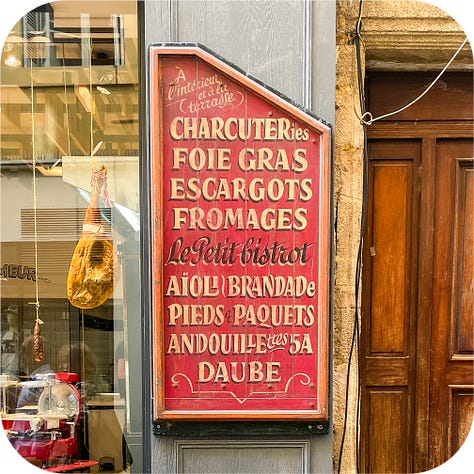
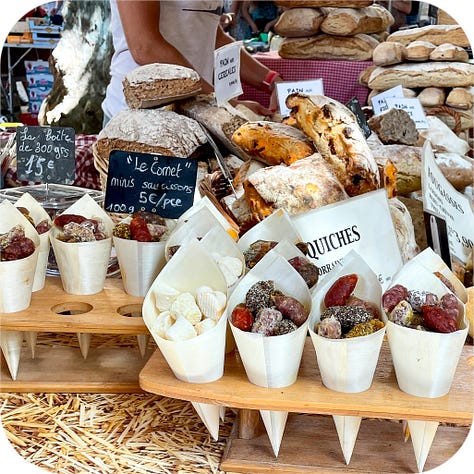
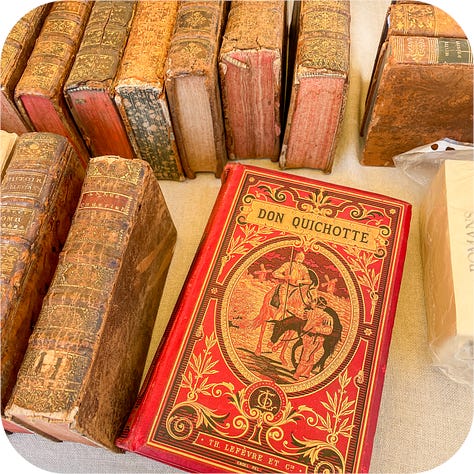
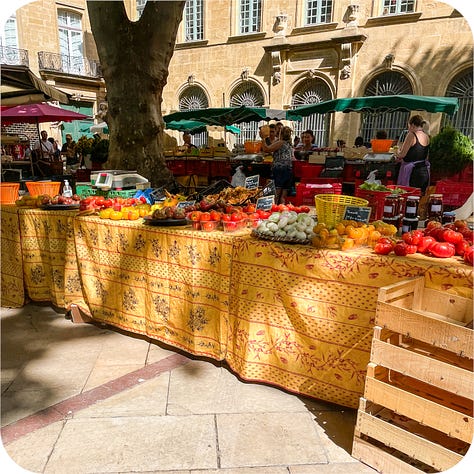
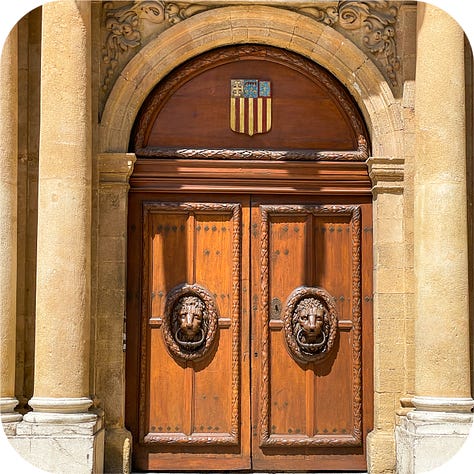
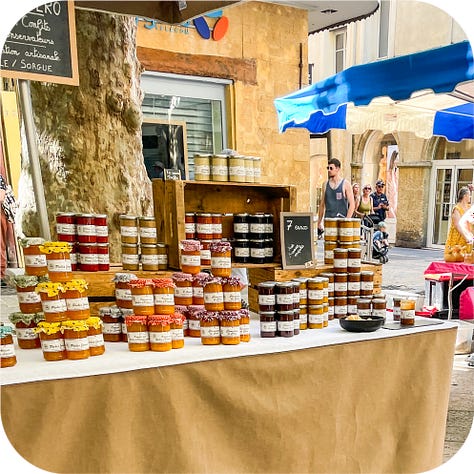
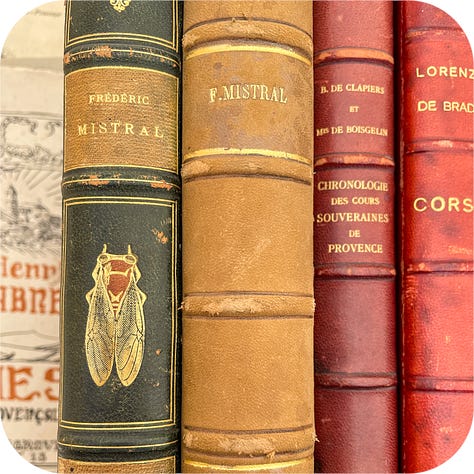
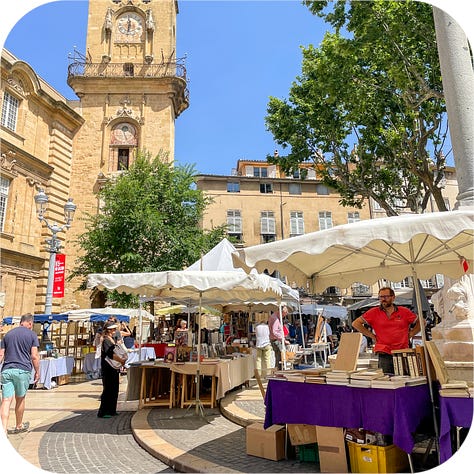
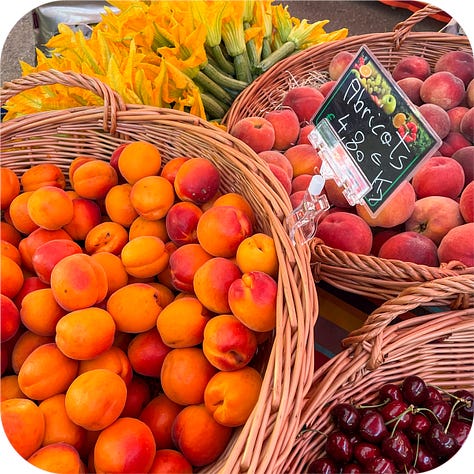
The twice-weekly market in Arles is huge, and runs in a half-circle around the walls of the old town. Every food you can imagine is for sale, from live chickens and rabbits (which I can’t bear to look at), to olives and cheeses, to honey and mustard, fruits, breads, and more. There are stands set up selling expensive linens and home goods…but at the other end of the market, there are lots of stands that have piles of clothes and housewares and sheets for a dollar a piece. It is not picture-postcard Provence at this end of the market, but these are the stands that are the busiest, with huge crowds of people waiting for the vendors to fill their tables of wares.
Are you at all familiar with the little Provençal candies called calissons? I have always wanted to try them. In pictures, they look like they would be deliciously lemony, because of their color and shape. They have been making calissons in Provence since the 13th century…mostly in Aix-en-Provence, where you are greeted with a calisson manufactory just a block from the train station. It turns out, though, that the shape of a calisson is that of an almond, not a lemon, and they are made of ground almonds and candied fruit and then topped with royal icing. They are ever-so-slightly sweet and have a waxy melon flavor…a flavor I can only describe as “the kind of thing that a Medieval serf who had never had anything truly tasty would enjoy.”
And yet, they sell them everywhere here.
{The Luberon}
After weeks in the south of France, I finally find my first lavender field. It will be another month before the plants are in full bloom, but the rows of lavender in front of the Abbaye de Sénanque - in the part of Provence known as the Luberon - are just starting to show little purple buds. That’s okay - I don’t need showy blooms. The lavender’s heavenly fragrance still floats through the air, mingling with the scent of fresh pine that seems to be ever-present here in the countryside.
The French love a good story - who doesn’t? - and there is a sweet story regarding the cultivation of lavender in this part of France…and a little purple fairy named Lavandula, which coincidentally is the botanical name of lavender.
Lavandula was born and raised in Provence. Like most fairies, she wanted to see more of the world as she grew older - and particularly more of France. And so she traveled around the country, keeping sketches of the places that she visited in a notebook. One day, when she was feeling lonely and far away from home, she opened her notebook to a drawing of the golden landscape of the hills around her home in Provence.
Lavandula began to weep, and - because she was a lavender fairy - she wept deep purple tears that colored her drawing as they fell. She attempted to wipe the tears away, but her lavender tears spread across the landscape as she wiped, staining the hills a deep purple when they dried…and the hills of Provence have been awash in glorious purple lavender each summer since Lavandula cried her heart out in memory of her home.
The Abbaye de Sénanque was built in 1148, and still has a community of Cistercian monks living within its walls. The abbey itself is beautiful, built with clean Romanesque lines in that buttery Provençal stone, but its isolated setting in a secluded valley is what takes one’s breath away. Tourists swarm here to take photos, and there are tours several times a day. Despite the crowds, though, there is a hush in the valley - a sign of respect for the monks who call the abbey home. It is quiet and peaceful…and it smells good to boot. Honestly it’s hard not to think that if you’re going to be a monk, this is the place to do it.
Arles was founded in the first century BC and retains much of its Roman heritage. There is an large Roman necropolis just outside of the city walls called les Alyscamps, Roman baths, a half-moon Roman theater, and other smaller sites. Taken in whole, they are the largest and most important collection of Roman monuments outside of Rome, and many of them are UNESCO World Heritage Sites. It is the beautiful 1st-century B.C. Roman arena that dominates the old town, though. Perched on a hill, the arena still hosts concerts during the summer, and a bullfighting festival once a year.
Side streets radiate like sunbeams from every side of the arena. Tucked into one side street in particular is a bookshop: De Natura Rerum, named for the philosopher Lucretius’ long-form poem. The bookstore has two specialties: ancient classical literature - in French, alas, or you might never have gotten me out of there - and local alcohols that they source from Provence and all over the south of France. The kind owner is passionate about his business, and always willing to provide samples of the local brews. He sold several varieties of locally-made pastis, the anise-flavored liqueur that is a Provençal specialty. I love anise, and I learned to love pastis…even though I ordered it several times while out and about before I realized that the glass of water that they always bring with the drink is meant to combine with and dilute the liqueur. It was even better after I started drinking it the right way. I maintain that the easiest way to pretend that you are in Provence is to find the hottest sun you can imagine and sit under it, drinking a glass of pastis with some crusty bread and olive tapenade. It is a match made in heaven.
It is difficult not to stop in your tracks when walking past the shop front of Maison Lilamand. Candied fruit is the other sweet specialty of Provence, and Maison Lilamand doesn’t just sell run-of-the-mill lemon peel or cherries, but entire candied oranges, and melons - even whole candied pineapples. They are not inexpensive - a large candied melon can cost close to 70 euros. But wow, are they beautiful to behold. Glowing in the shop window they appear to be lit from within.
Of course, these are no ordinary melons - they are Provençal Cavaillon melons, which any local will gladly tell you are the best melons in the entire world. Their delicate fragrance fills the markets here, and yes, they are delicious. More delicious than calissons, I can tell you that.
My favorite square in Arles is the Place de la Republique. The large, wide open space is lined with government buildings on three sides, with a large church in one corner and shops on the other edge. It is always filled with locals: hanging out on the steps, perched on the fountain enjoying ice cream from the adjacent glacerie, and often celebrating weddings at the city hall or the church. The air is filled with laughter and warmth and good will…it is the very opposite of pretentious. Actually, I’m starting to wonder how I ever could have thought such a thing about Provence at all.
A few years ago, I went on a road trip across the western part of the United States with my twin sister. We drove through the plains of South Dakota and Montana, though Wyoming and Idaho and Oregon. We stopped at national parks along the way - Yellowstone and the Badlands, and ended up at Redwood National Forest.
We saw bison up close and wolves and herds of elk…but there was nothing - nothing - we wanted more during this trip than to see a bear. We had our eyes out the whole time, and spent hours driving through parts of Yellowstone that were known to have bears, to no avail.
And then, as we were driving on a quiet road out of Redwood National Park - a road that would lead us to the airport in Sacramento, where my sister would drop me off to fly home - we ran across a tiny little black bear, ambling his way along the side of the road.
“OMG, A BEAR!!!!!!” The excitement in the car was through the roof.
The bear was decidedly more nonchalant. He looked over his little shoulder at us as we passed. He probably turned simply because he heard a car, but it felt like he was looking at us and saying, “You just had to have faith in me…I was here waiting for you all along.”
He felt like a sign.
Back in Arles, I’m having trouble sleeping.
I love the view from the window in the front of the apartment. It is above a shop on a tiny curving street near the Arena. In the early morning it is quiet, but as the day goes on shopkeepers arrive to open their doors. During the day they stand in the doorways and chat with their neighbors, and watch people go by. Twice a day uniformed children stream by on their way to and from the school around the corner. Most of them stop by the bakery down the street to pick up breakfast or an after-school snack.
Occasionally a car drives through, but the car has to be either very small or the driver very brave.
Late at night, after the sun goes down, families walk by with young children. At first it seems odd that they are out so late, but you quickly realize that it is not until late at night that it is finally cool enough for the children to play.
The night I can’t sleep, I find myself sitting at the open window in the middle of the night, leaning out over the street and feeling lucky to be alive and healthy and in this beautiful town in France. As I sit, I hear a distinct clop-clop-clopping in the distance. As the sound gets closer, a man on horseback comes around the bend, slowly walks past the window and then turns around the corner. He looks up at me and nods as he passes. I look around for my camera, but he is gone too quickly.
As I write this, I feel like it may not seem remarkable, but as it happens it feels like a dream. Like magic. I have not seen any horses in Arles in the three weeks that I have been here, and I definitely have not seen any lone riders in the middle of the night.
When I tell my sister this story, I say that if I believed it signs, I would take it as a sign…but since I don’t really believe in signs, I’ll just take it as a reminder to be thankful for little, unexplained moments.
I can almost hear the shriek as she replies, “What do you mean you don’t believe in signs?! Don’t you remember the bear!?!”
And she’s right. As I contemplate the lone rider, I think about the little black bear, who’s prescence was a reminder of the importance of faith.
And I also think about the story of Lavandula, the lavender fairy. There are, of course, practical reasons why lavender grows in Provence, including the Provencal climate - and technical and scientific advancements. But oh, isn’t the fairy tale lovely?
And last, it’s the words of the Englishman Roald Dahl that come to mind:
“And above all, watch with glittering eyes the whole world around you because the greatest secrets are always hidden in the most unlikely places. Those who don’t believe in magic will never find it.”
And for me, that’s the most important lesson of all.
XO
P.S. - I really don’t know if my rider was a sign, or a lesson or a reminder…but sitting on a patio at a small cafe on an even smaller street a couple of nights later, the horse and his rider clop by again. The waitress stops in her tracks and says “Huh. Look at that.” (Except in French, of course.) I ask her if there are a lot of horses on the street in Arles, and she says that as long as she’s lived there, she’s never seen one before. I take this as proof that he was there just for me.
P.P.S. - If you enjoyed this letter, please consider becoming a subscriber to have Beautiful Things delivered to your inbox. Subscriptions are free, unless you choose otherwise. Absolutely no pressure at all, but if you’d like to support my writing, I’ve added a virtual tip jar as well: you can find the “Buy me a coffee” button below. Thank you for reading!






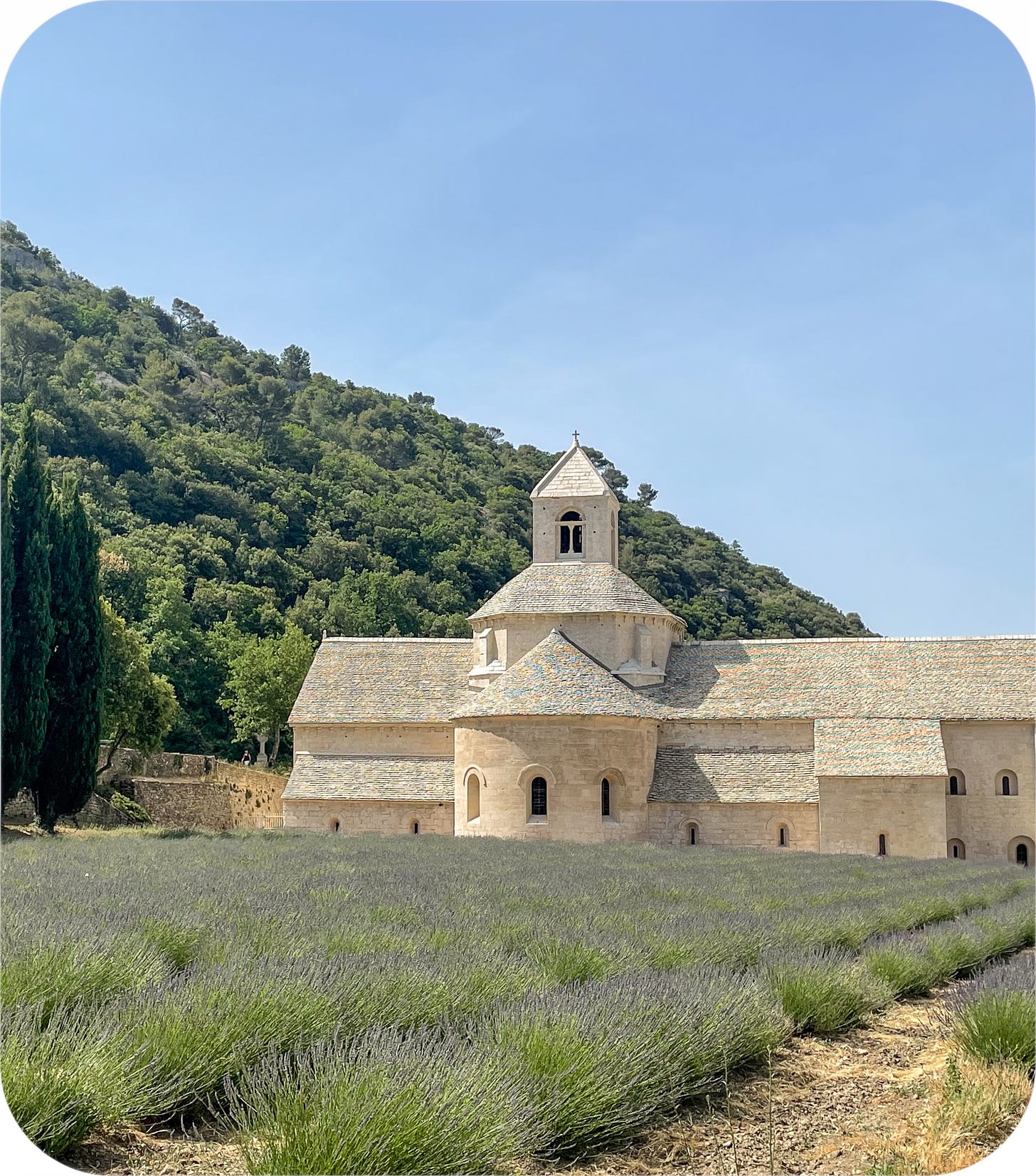

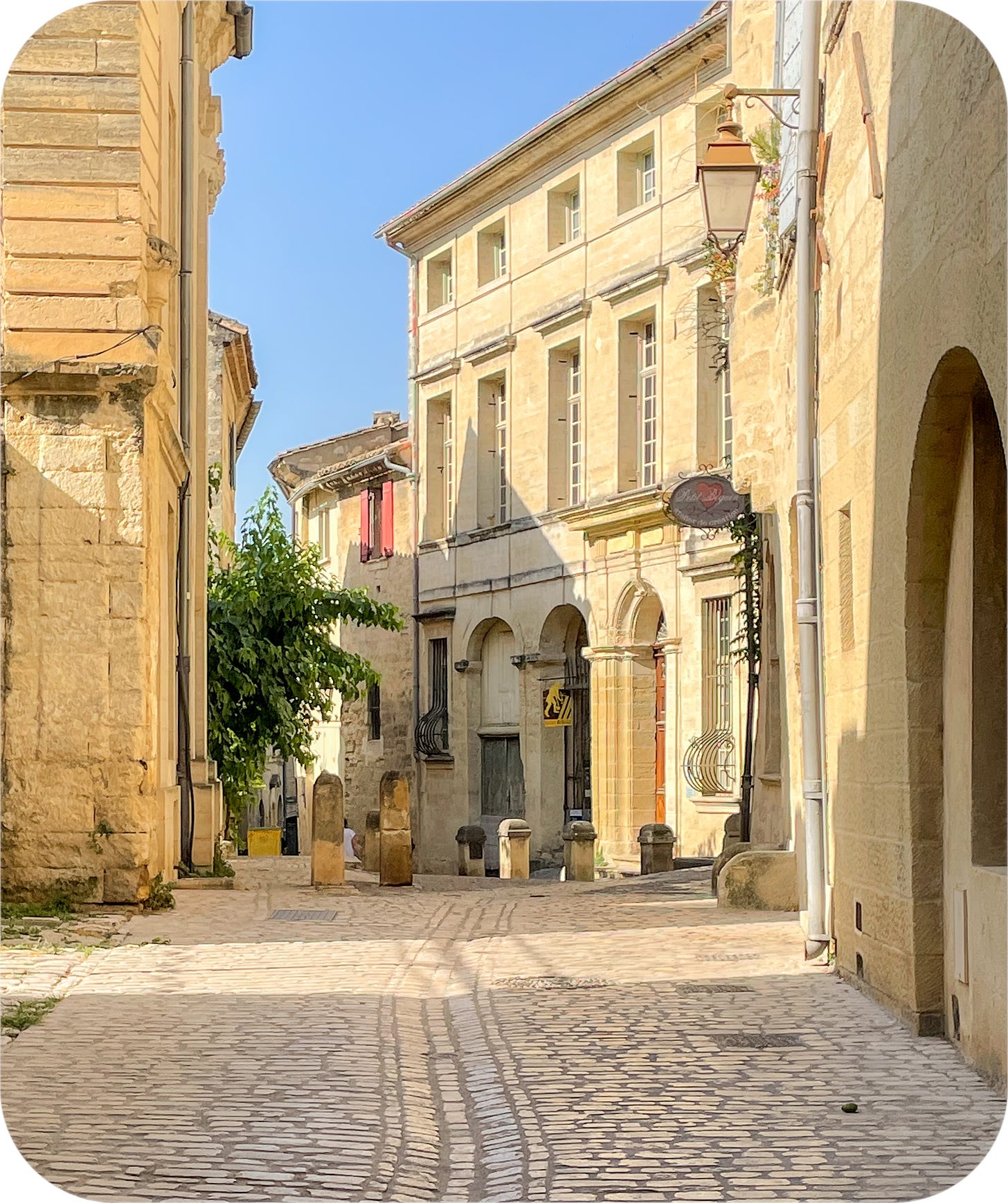


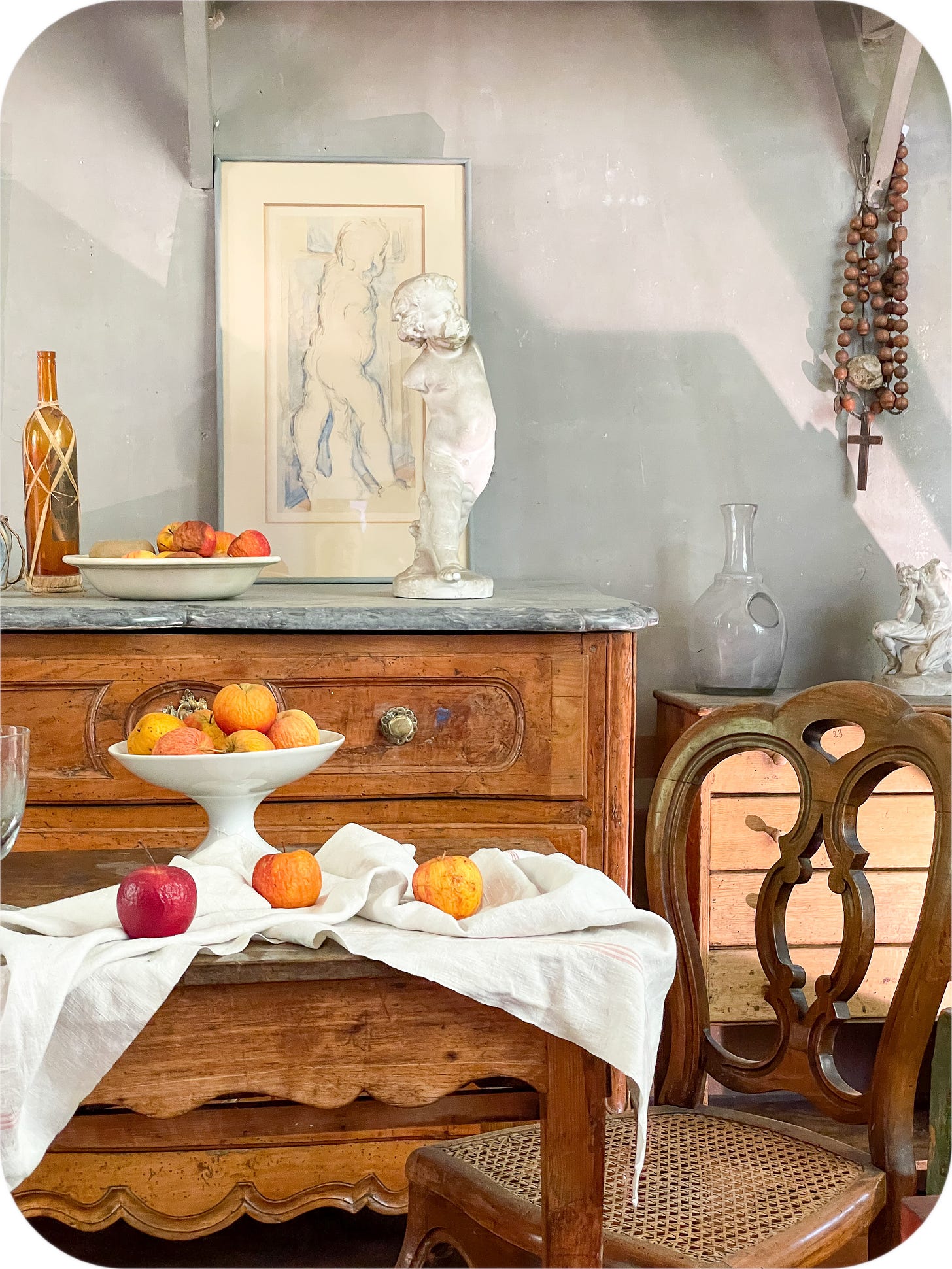
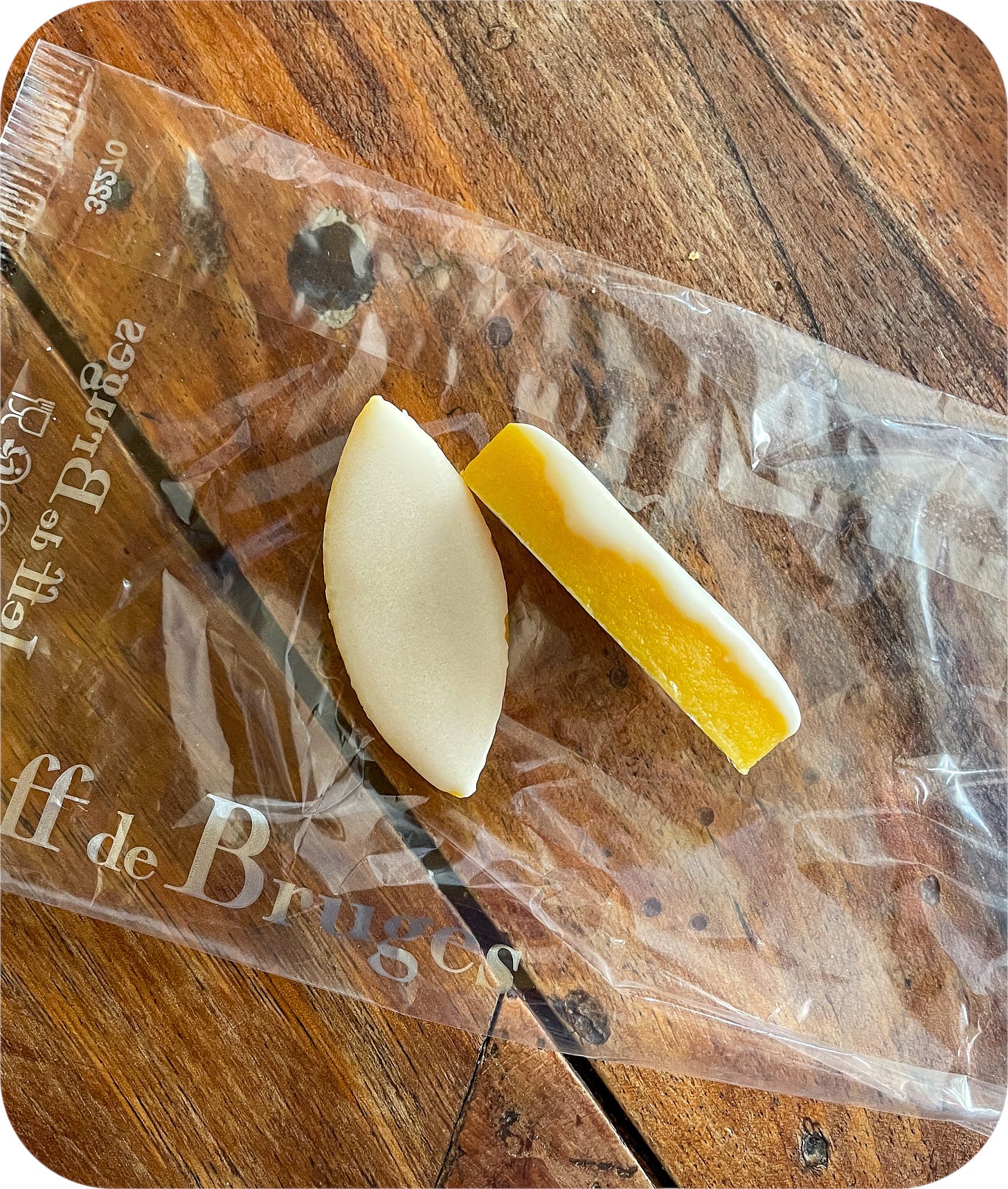
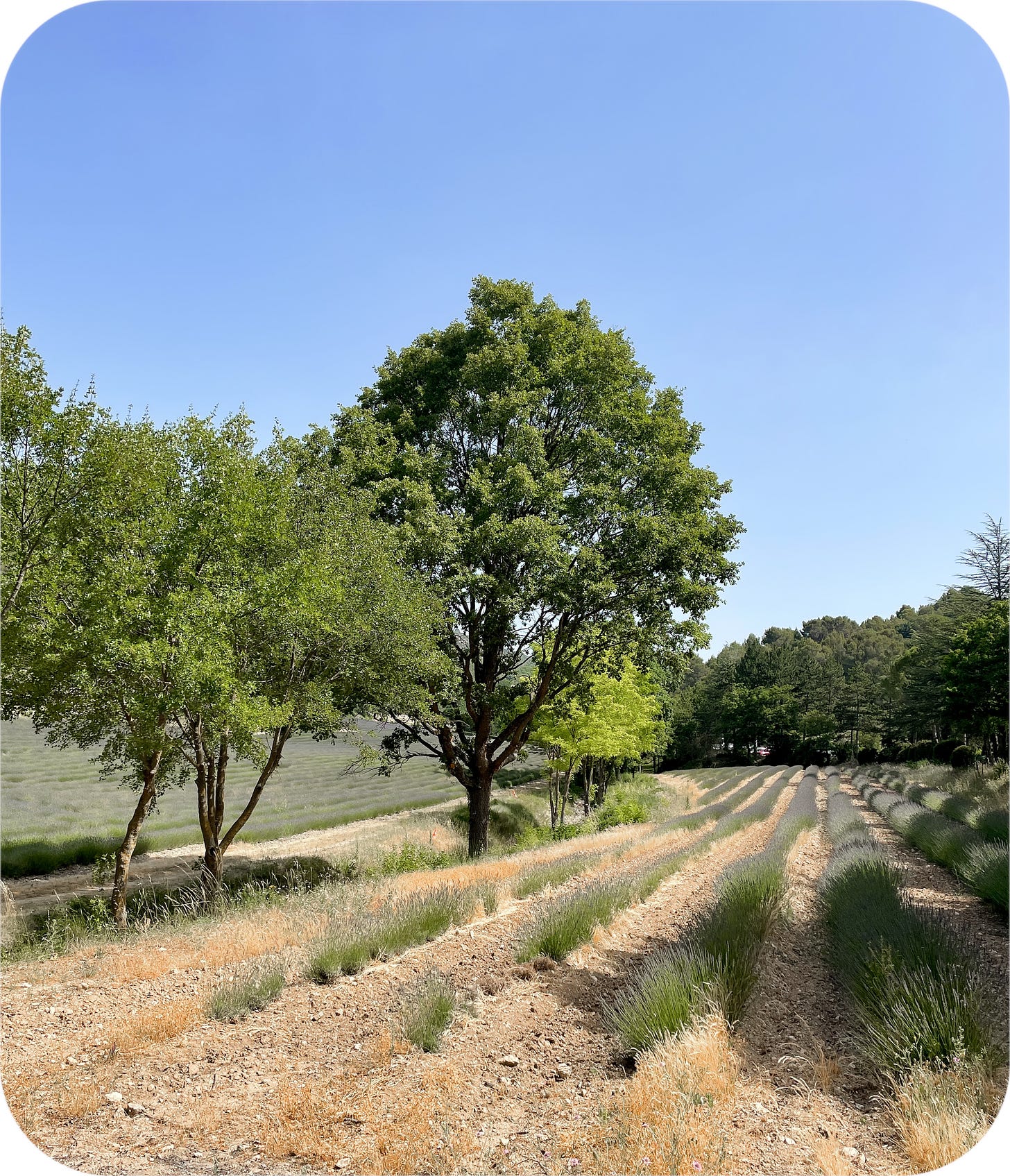
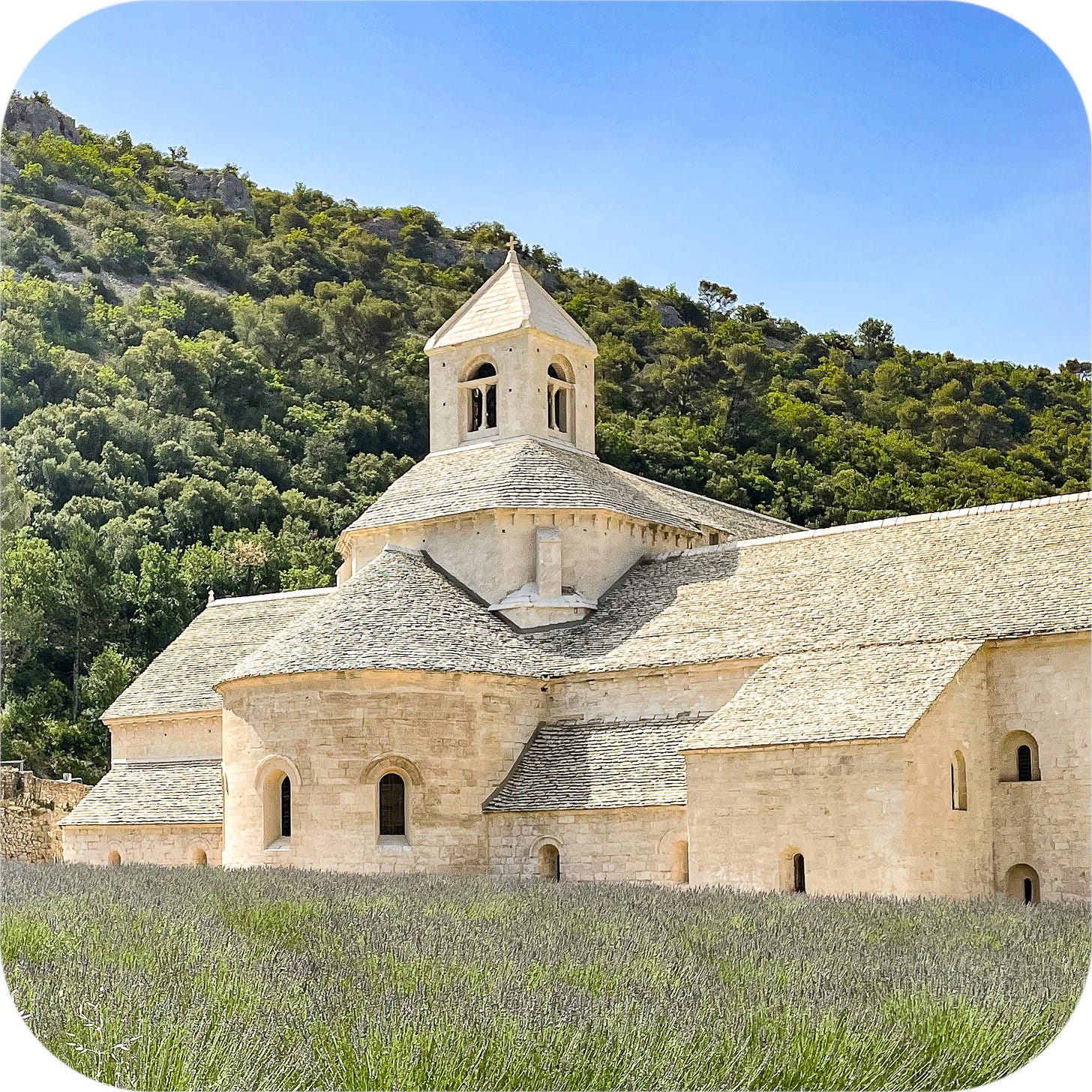
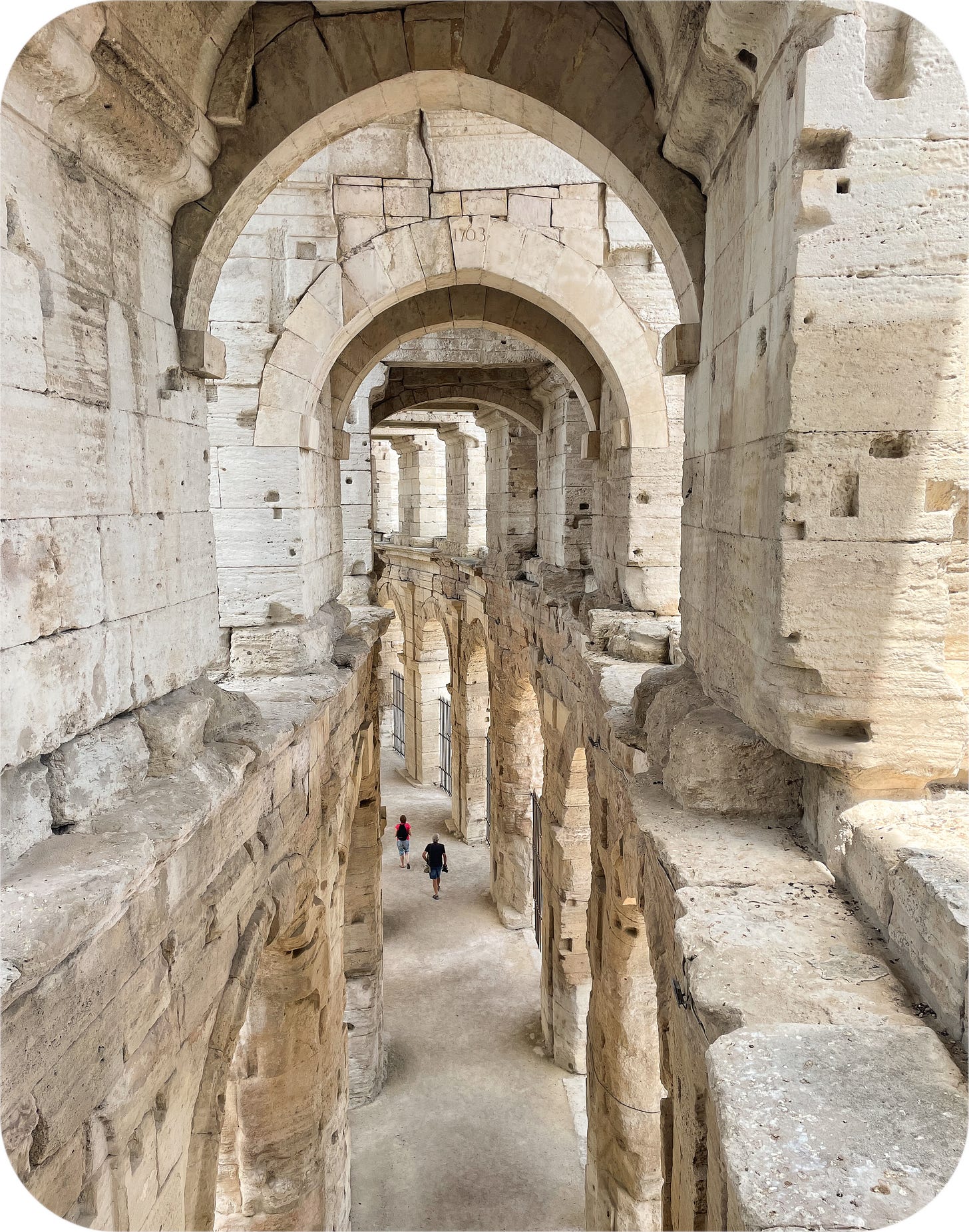
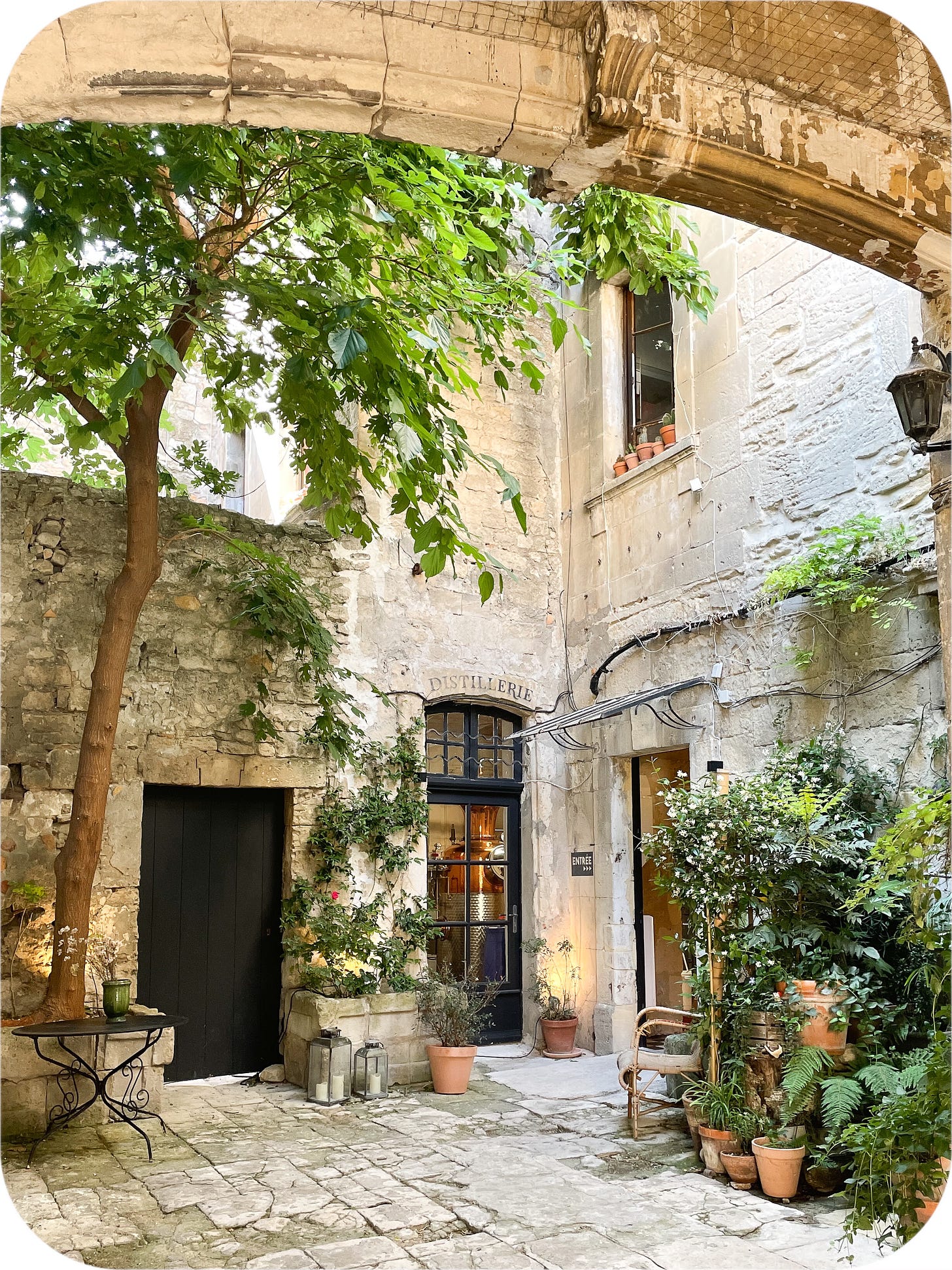

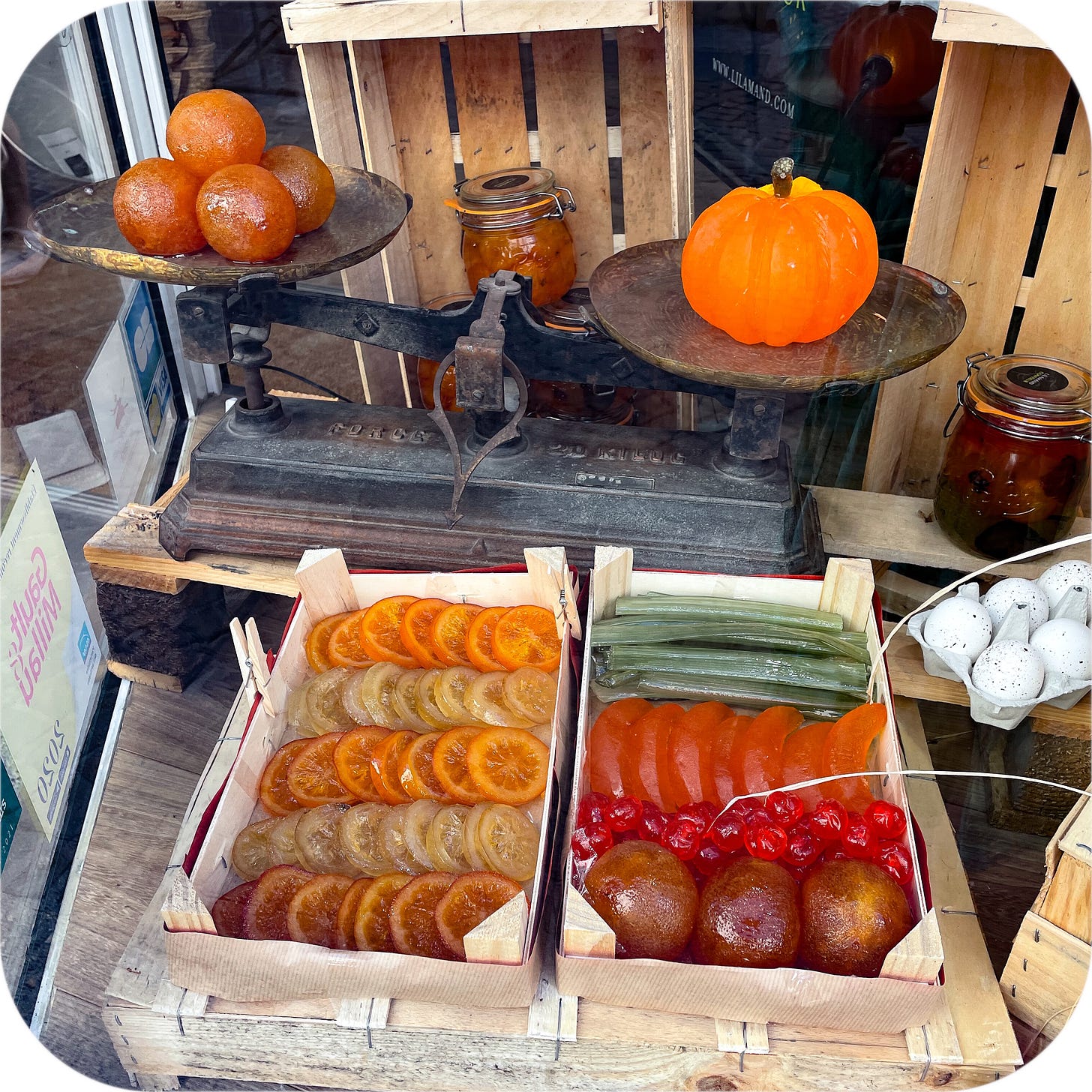
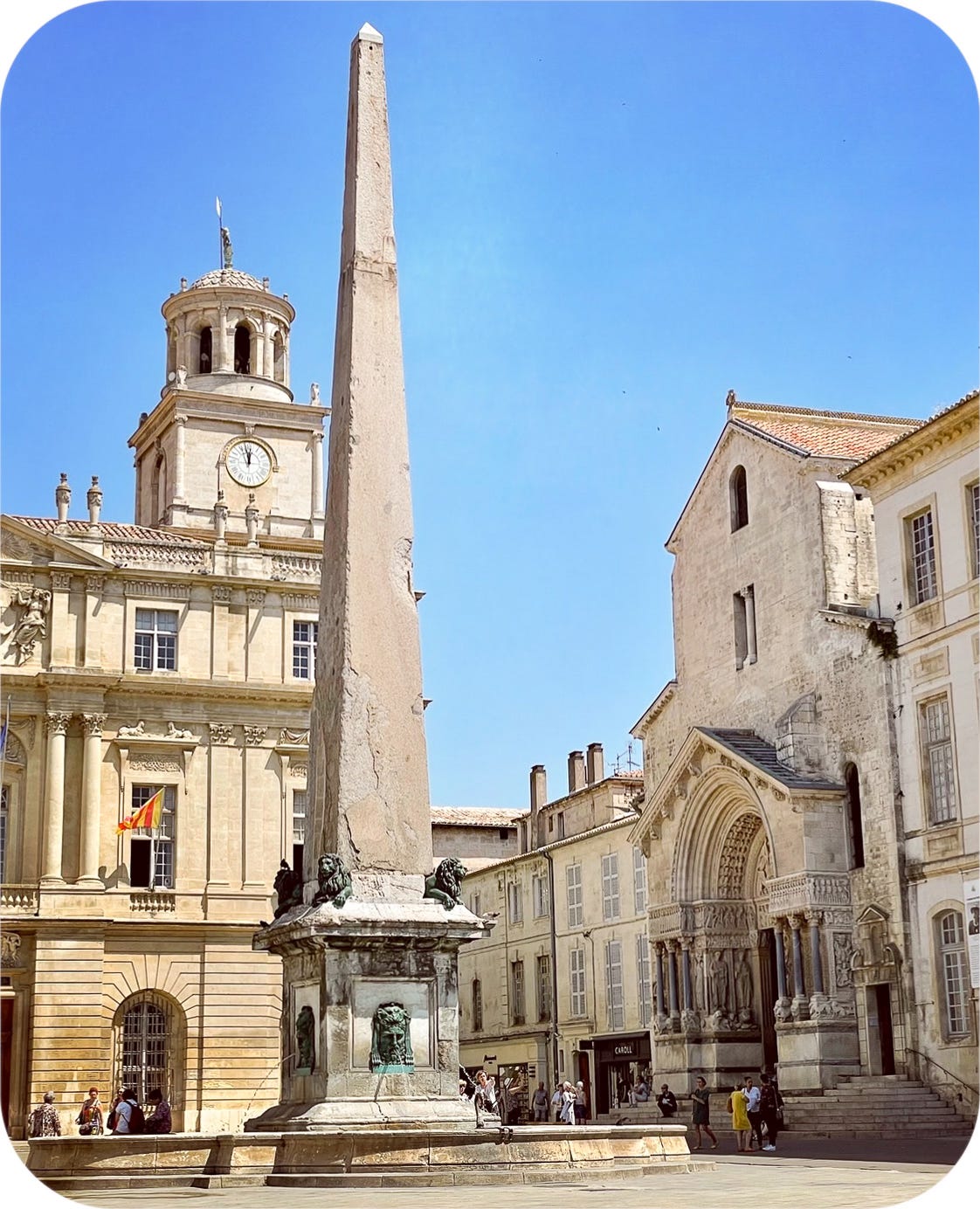
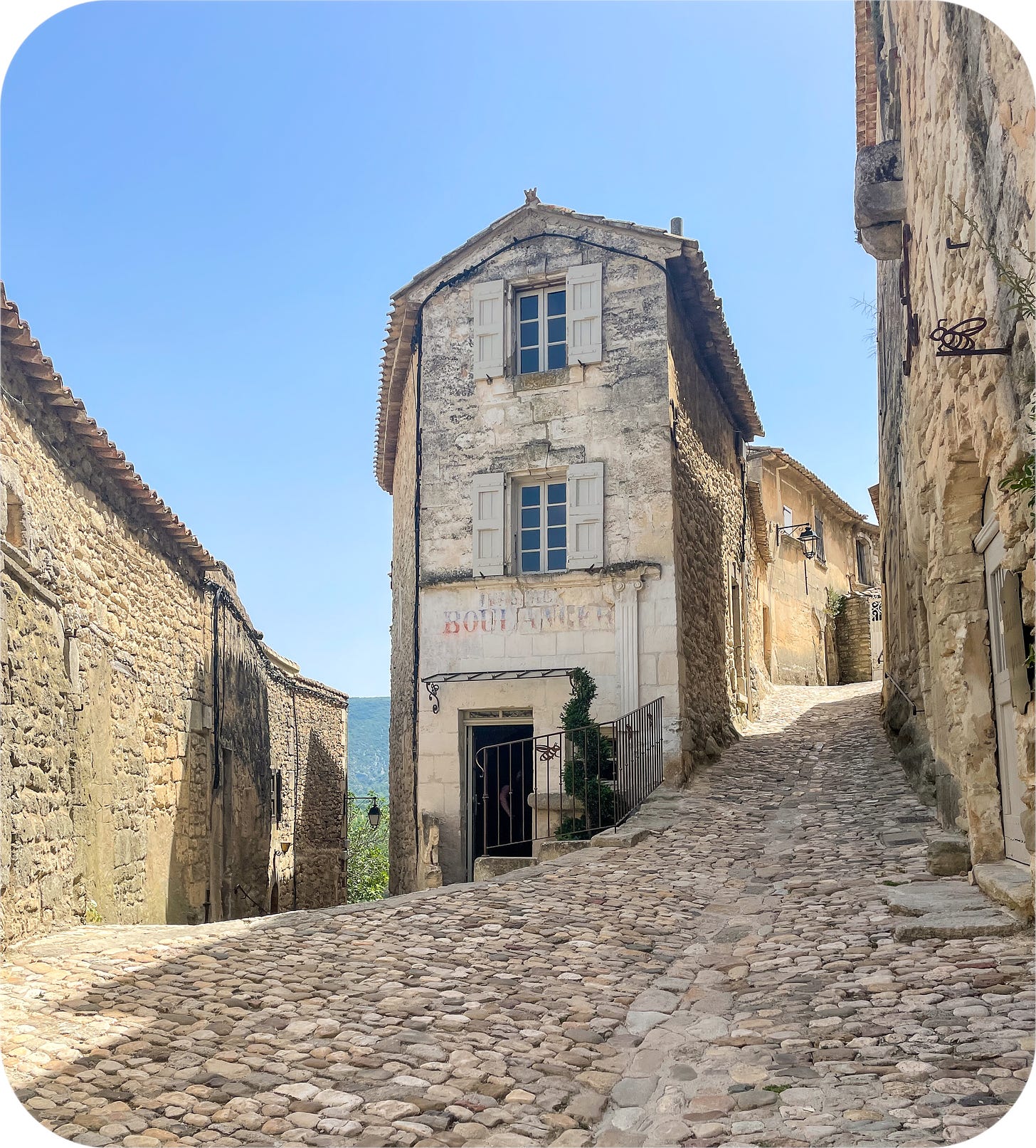
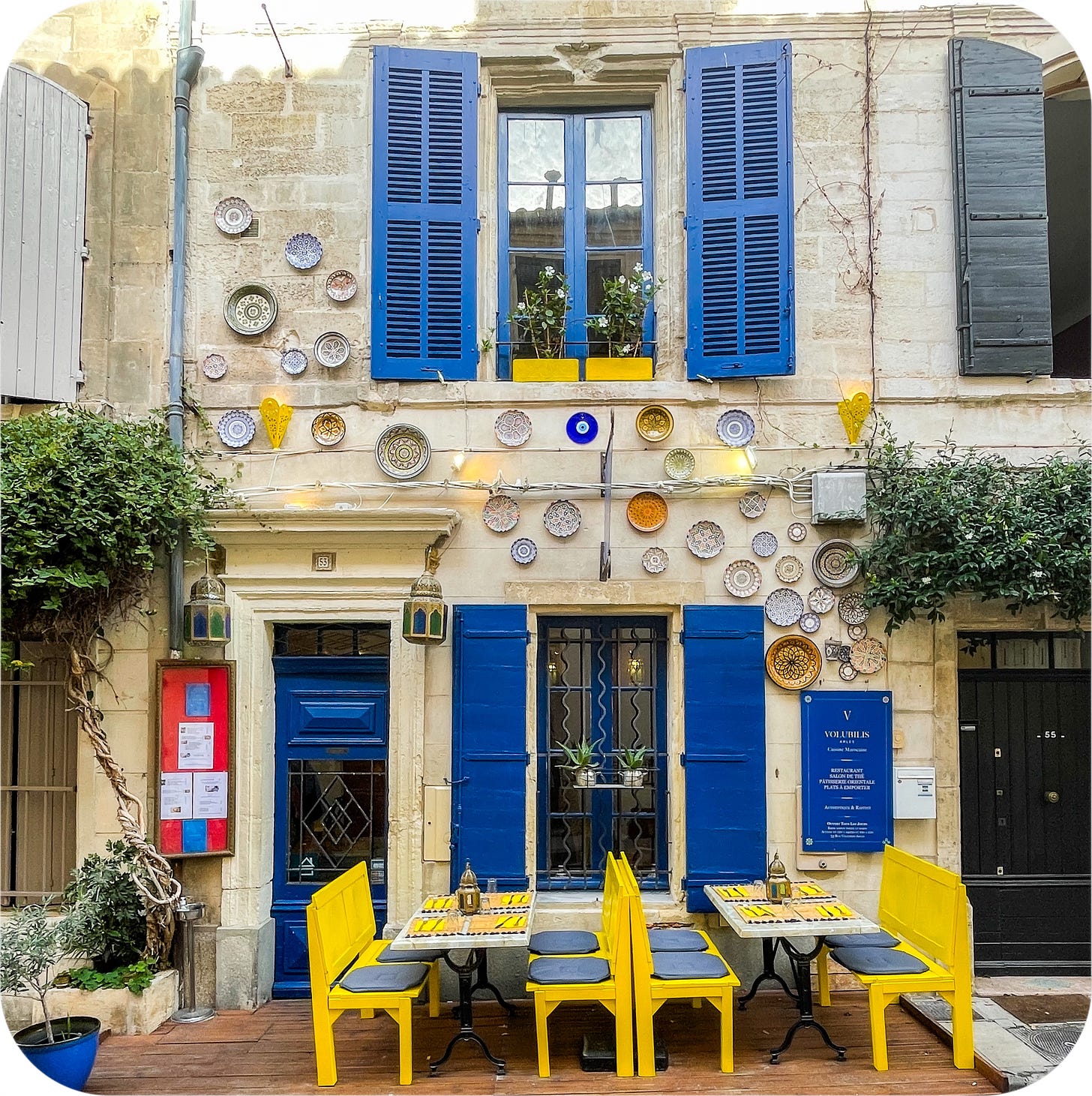
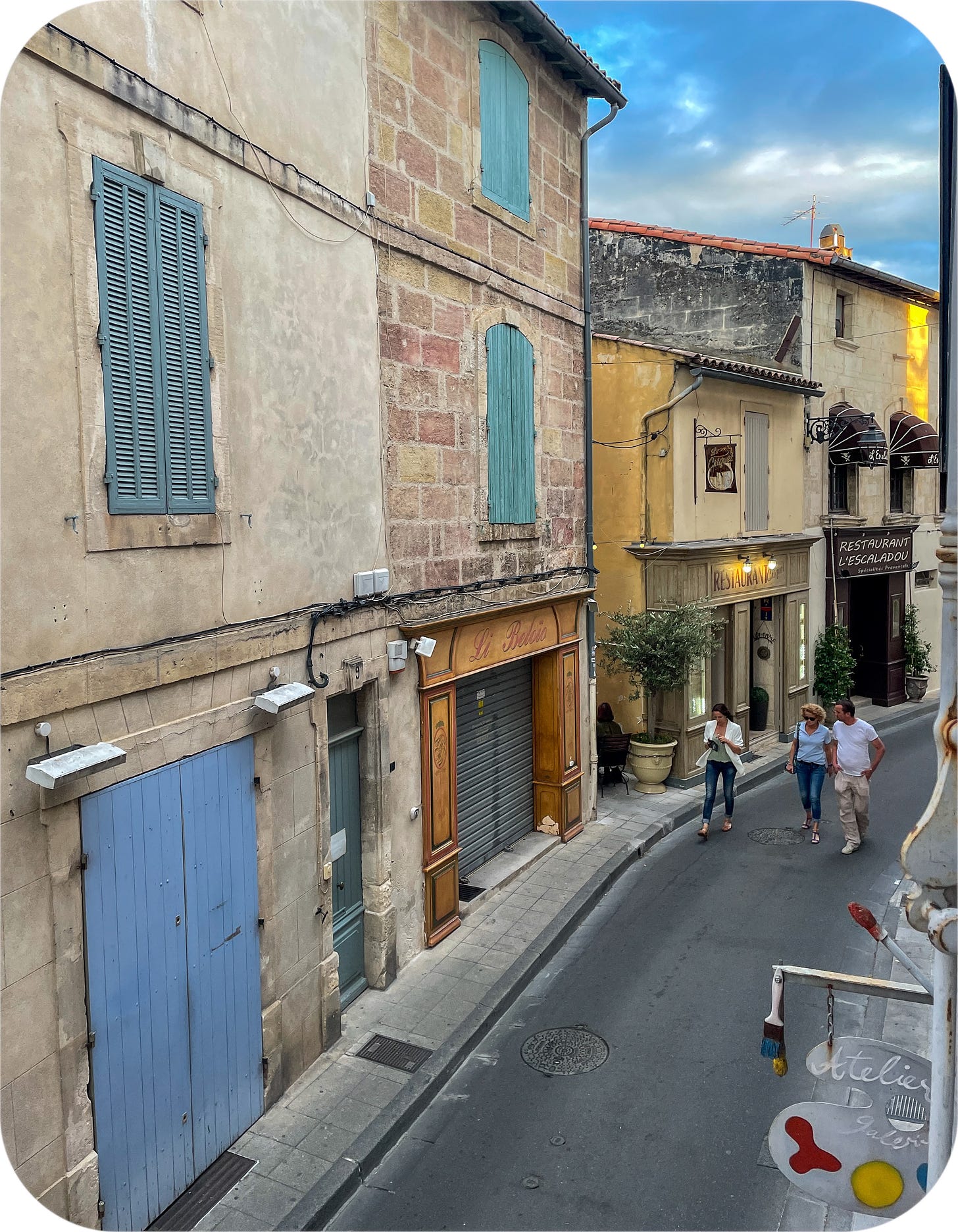
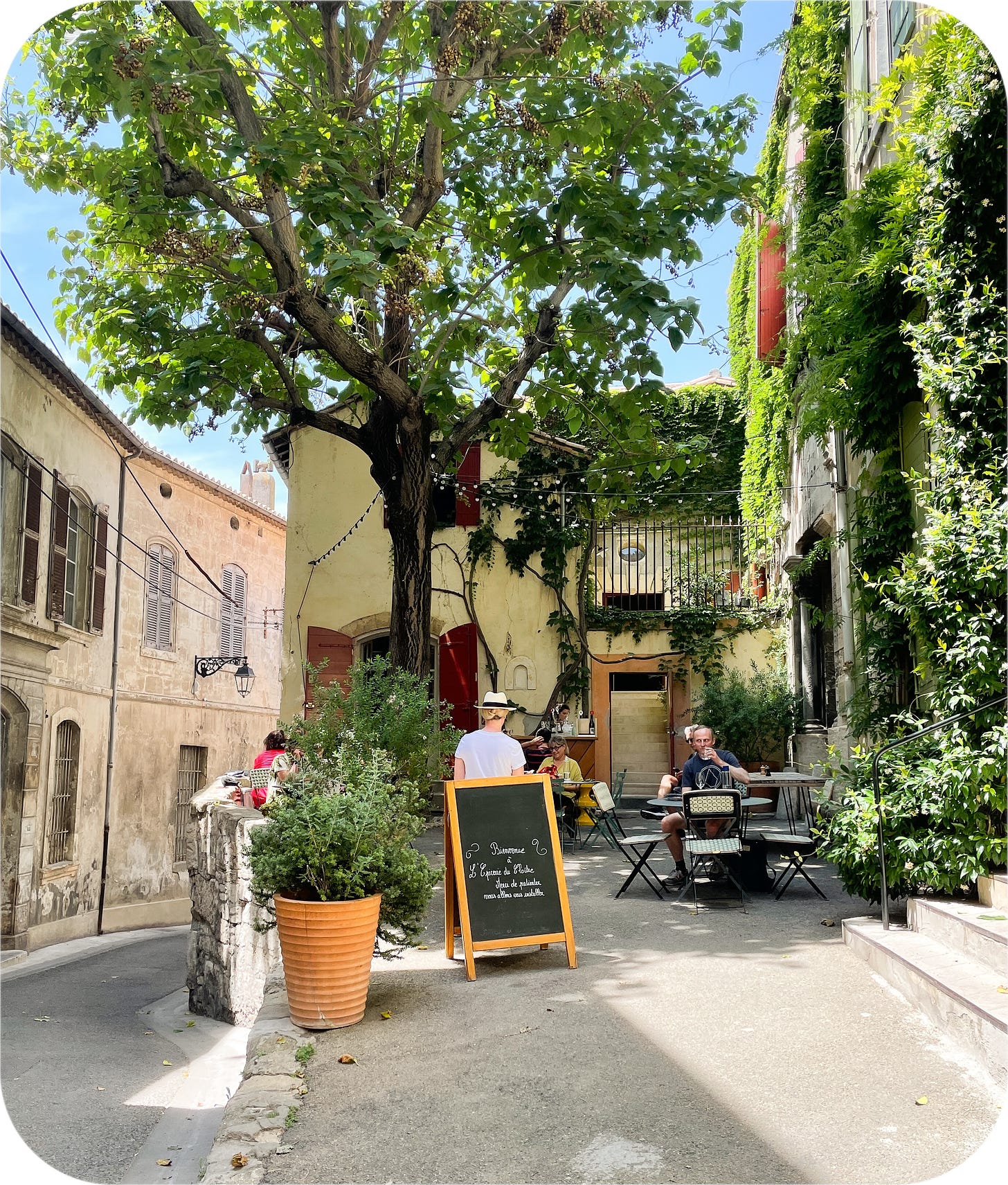




My French husband introduced me to calissons and I love them, but good ones are quite pricey.
Such a wonderful and well written article. I’ve never been but really need to go now! The northern part of France & Paris in particular have been my stomping ground for several years. Time to change it up!